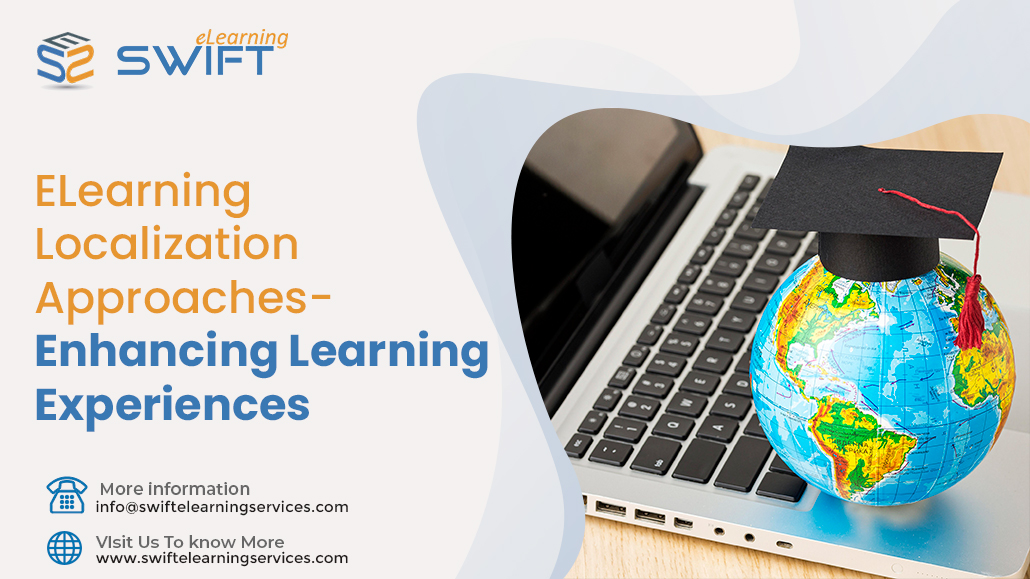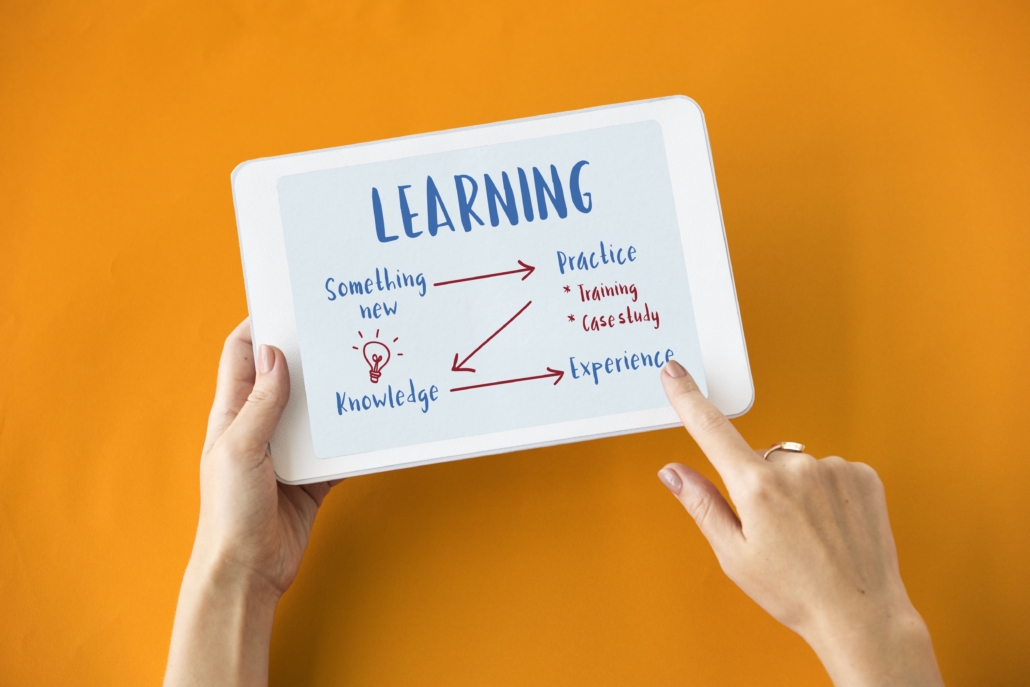ELearning Localization Approaches- Enhancing Learning Experiences
In today’s interconnected world, the field of education has been transformed by the power of technology. ELearning, or electronic learning, has become a cornerstone of modern education systems, enabling learners to access knowledge and resources from anywhere, at any time. As the reach of eLearning expands globally, the need for localization has never been more apparent. In this blog post, we will delve into the concept of eLearning localization and explore various approaches that enhance learning experiences.
1. Understanding eLearning Localization
ELearning localization refers to the process of adapting educational content to suit the cultural, linguistic, and regional preferences of learners in different parts of the world. This practice goes beyond mere translation; it involves modifying content to ensure that it resonates with the target audience, making it relatable, engaging, and effective.
2. Enhancing Learning Experiences through ELearning Localization
2.1 Cultural Sensitivity and Contextualization
Cultural sensitivity is a crucial aspect of eLearning localization. Different cultures have unique norms, values, and traditions that influence how individuals perceive and process information. To enhance learning experiences, eLearning content must be contextualized to align with the cultural nuances of the target audience. This includes using culturally relevant examples, images, and scenarios that learners can easily relate to. By acknowledging and respecting these cultural differences, eLearning can become more inclusive and impactful.
2.2 Language Localization
Language is at the heart of communication, and accurate translation is fundamental to eLearning localization. It’s important to collaborate with skilled translators who are not only proficient in the target language but also understand the subject matter. Avoiding literal translations and opting for culturally appropriate idioms and expressions ensures that the content flows naturally and resonates with learners. Furthermore, text length can vary during translation, so it’s important to design eLearning modules that can accommodate these differences without compromising visual aesthetics.
2.3 Visual and Multimedia Localization
ELearning materials often include visuals, videos, and interactive elements. These elements need to be localized to suit the target audience’s preferences and cultural context. Visuals should reflect diversity and inclusivity, showcasing individuals from various backgrounds. Additionally, multimedia content such as videos and audio should be available in multiple languages, enabling learners to choose the language that best suits their learning needs.
2.4 Assessment and Evaluation Localization
Assessment is a vital component of eLearning, as it measures the effectiveness of learning objectives. However, assessment questions must be carefully localized to avoid cultural biases that could hinder learners’ comprehension. What might be considered common knowledge in one culture could be unfamiliar in another. By crafting assessment questions that are culturally neutral, the evaluation process becomes fairer and more accurate.
2.5 Adaptive Learning Paths
Localization also extends to the design of adaptive learning paths. Different cultures might prioritize certain topics over others. By tailoring learning paths based on cultural and regional preferences, learners are more likely to engage with content that aligns with their interests and needs. This approach enhances overall engagement and retention rates.
2.6 Collaborative Localization
Incorporating input from local experts and educators can greatly enrich the localization process. These individuals possess a deep understanding of the target audience’s preferences, learning styles, and cultural sensitivities. Their insights can guide content adaptation, leading to more relevant and effective eLearning experiences.
3. Steps to streamline eLearning Localization
Streamlining eLearning localization is crucial to ensure efficient and effective adaptation of content for diverse audiences. Here are steps to help you achieve a streamlined process:
3.1 Pre-Localization Planning
Define Target Audience
Clearly identify the target audience’s cultural, linguistic, and regional preferences to guide the localization process effectively.
Content Audit
Review existing eLearning content to determine what needs localization and prioritize based on relevance and impact.
3.2 Cultural and Content Analysis
Cultural Research
Conduct in-depth research on the cultural nuances, sensitivities, and preferences of the target audience.
Content Analysis
Identify cultural references, idioms, and scenarios that may need adaptation for better resonance.
3.3 Collaborative Localization
Local Experts
Involve local experts and educators from the target region to provide insights and suggestions during the localization process.
Cross-Functional Teams
Establish cross-functional teams including subject matter experts, translators, designers, and developers to ensure a holistic approach.
3.4 Localization Tools and Technology
Translation Management System (TMS)
Implement a TMS to manage translation workflows, glossaries, and maintain consistency.
CAT Tools
Utilize Computer-Assisted Translation (CAT) tools to improve translation efficiency and maintain terminology consistency.
3.5 Translation and Adaptation
Professional Translators
Collaborate with professional translators who have subject matter expertise and cultural understanding.
Cultural Adaptation
Ensure that translated content is culturally appropriate, avoiding literal translations that may not convey the intended meaning.
3.6 Multimedia Localization
Visual and Audio Elements
Adapt images, videos, and audio to resonate with the target audience while maintaining cultural sensitivity.
Text Expansion/Contraction
Plan for potential text expansion or contraction during translation to avoid layout issues.
3.7 Assessment and Evaluation
Culturally Neutral Questions
Develop assessment questions that are culturally neutral, avoiding any biases or cultural assumptions.
Localization of Feedback
Localize feedback and explanations accompanying assessment results.
3.8 Content Management System (CMS)
Structured Content
Organize eLearning content in a structured manner within the CMS to facilitate efficient updates and changes.
Version Control
Maintain version control to track changes and updates to localized content.
3.9 Quality Assurance (QA)
Review and Testing
Implement a thorough review and testing process to ensure accuracy, cultural relevance, and functionality.
User Testing
Conduct user testing with representatives from the target audience to validate the effectiveness of the localized content.
3.10 Feedback Loop and Continuous Improvement
User Feedback
Encourage users to provide feedback on the localized content to identify areas for improvement.
Iterative Approach
Treat localization as an ongoing process, incorporating feedback and refining strategies over time.
3.11 Documentation and Guidelines
Localization Style Guide
Develop a comprehensive style guide that includes guidelines for language, tone, formatting, and cultural adaptation.
Best Practices
Document successful strategies, lessons learned, and best practices to share with the localization team.
3.12 Monitoring and Analytics
Performance Metrics
Track engagement, completion rates, and learner satisfaction to measure the impact of eLearning localization.
Analyze Trends
Analyze trends to identify areas of improvement and adapt the localization strategy accordingly.
By systematically following these steps, organizations can create a streamlined eLearning localization process that not only saves time and resources but also delivers impactful and culturally relevant learning experiences to a global audience.
4. Conclusion
In a world where access to knowledge knows no geographical boundaries, eLearning has emerged as a powerful tool for education. However, for eLearning to truly bridge these gaps and enhance learning experiences, localization is imperative. The approaches mentioned above, from cultural sensitivity to collaborative localization, provide a comprehensive framework for creating eLearning content that resonates with diverse learners around the globe.
By embracing these approaches, educators and content creators can ensure that their eLearning offerings are not only informative but also engaging, culturally relevant, and impactful. Through eLearning localization, we can truly enhance the way people learn and contribute to a more inclusive global education landscape.
Frequently Asked Questions (FAQs)
What is eLearning localization?
eLearning localization refers to the process of adapting educational content, such as online courses, modules, and resources, to suit the cultural, linguistic, and regional preferences of learners from different parts of the world. It goes beyond translation, focusing on creating a more inclusive and relatable learning experience for diverse audiences.
How does eLearning localization enhance learning experiences?
eLearning localization enhances learning experiences by tailoring content to the cultural and linguistic context of the learners. It ensures that the material is relatable, engaging, and effective, taking into account factors such as cultural sensitivity, language nuances, and regional preferences.
Is eLearning localization only about language translation?
No, eLearning localization goes beyond language translation. While language is a significant aspect, localization also involves adapting visuals, multimedia elements, assessment questions, and even the learning path to align with cultural and regional sensibilities.
Why is cultural sensitivity important in eLearning localization?
Cultural sensitivity acknowledges the diversity of learners and their unique cultural backgrounds. By incorporating culturally relevant examples, scenarios, and visuals, eLearning content becomes relatable and respectful of learners’ identities, resulting in a more meaningful learning experience.
What role does language localization play in eLearning?
Language localization ensures that content is translated accurately and idiomatically, so it maintains its coherence and effectiveness in the target language. Translators with subject matter expertise play a vital role in conveying the essence of the content while adapting it culturally.
How does multimedia localization contribute to learning experiences?
Multimedia localization involves adapting images, videos, and interactive components to cater to the preferences and cultural context of the target audience. Inclusion of diverse visuals and offering multimedia content in multiple languages enhance engagement and accessibility.








Leave a Reply
Want to join the discussion?Feel free to contribute!